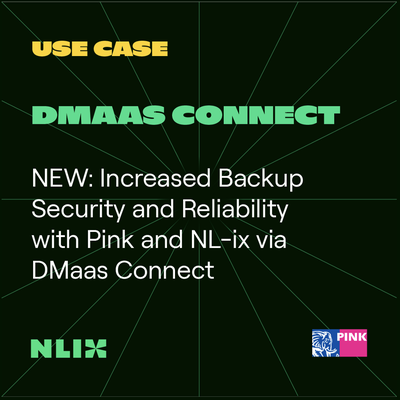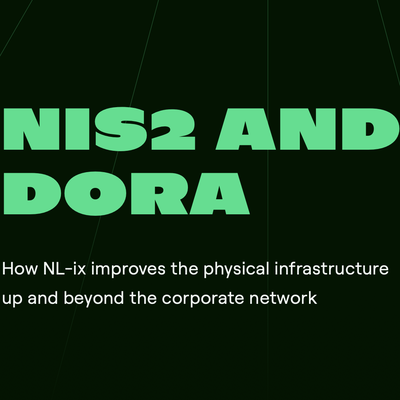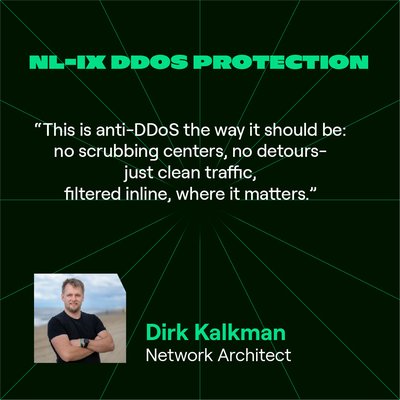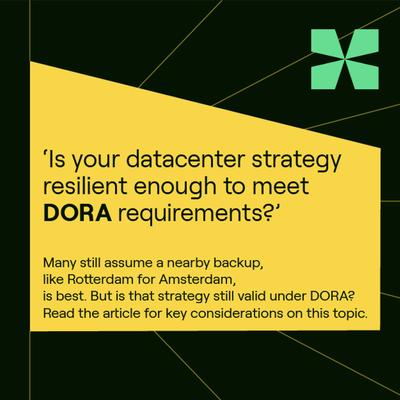
Connecting Care
BUILDING SECURE AND RESILIENT HEALTHCARE DATA INFRASTRUCTURE
Executive Summary
Healthcare transformation is accelerating under government directive as national authorities recognize that fragmented digital infrastructure threatens care quality and economic resilience. The Dutch Ministry of Health, Welfare and Sport developed a multi-year investment plan for shared data and data accessibility in the healthcare's current landscape. This paper looks into the challenges encountered to meet the requirements, but also the value of having secure access to such an extensive network of data.
Introduction
Organizations within the healthcare sector in the Netherlands and across Europe are experiencing a fundamental shift as modern patient care requires increasing cooperation between medical treatment and research institutions and it extends beyond traditional hospital walls into assisted living facilities, care homes, and patients' own residences. Moreover, we've observed that medical software and equipment suppliers are rapidly migrating to cloud-based solutions for diagnostic images and patient data, creating unprecedented demands on healthcare networks. The Dutch government has officially recognized this challenge, acknowledging that "the current healthcare landscape is fragmented" with "many sectoral and regional infrastructures that are not connected," prompting multi-year investment in a nationwide covering network to address these critical connectivity gaps.
Current Market Challenges
Healthcare organizations face several interconnectivity challenges that threaten care quality and operational efficiency. The Dutch Ministry of Health, Welfare and Sport has identified these issues as critical enough to warrant the development of a nationwide covering network, recognizing that "care is increasingly taking place in a network of multiple parties" requiring robust data exchange capabilities. The national strategy plan was submitted to the House of Representatives by the Minister on December 16, 2024 and it envisions a strategy in three steps that need to be accomplished by 2035. The national roadmap progresses from (1) organizing basic interoperability between healthcare providers, to (2) supporting networked care delivery with digital remote services and data reuse, and finally to (3) integral care that incorporates broader health information for prevention-focused healthcare.
The main guidelines in the national strategy plan are related to data being accessible on both the healthcare unit premise and outside of it (for emergency situations, remote healthcare and research institutions) and it needs to be available securely and in real time between units. In this, it is mandatory to meet the Privacy and security by design requirements: privacy and data security are already included in the design when developing functionality for the nationwide network. The data is always under the responsibility and influence of the source holder. This implies also that the data in transit needs to be secure (when travelling between locations).
Real-World Impact
During conversations with our customers in the healthcare sector, like individual hospitals, groups of cooperating hospitals and assisted living centers, we learned that they are facing exactly these connectivity needs when sharing information with each other or when monitoring patients that are at home or living in the assisted living centers.
Moreover, similar situations were encountered as medical equipment suppliers moved to storing data in the cloud for processing, rather than performing these activities on premise. For example, in case of accessing images (like x-ray images).
In all the above cases, it becomes vital to have secure and immediate access to data that is no longer stored on premise of the healthcare institution.
The Value of Shared Data and Reliable Internet Infrastructure
Solving healthcare connectivity challenges contributes to meeting the Government’s plan for better healthcare, improved quality of service and delivers measurable benefits that directly impact patient outcomes and operational efficiency. The national authorities’ investment in a nationwide data availability, including multi-year funding and partnerships, demonstrates the recognized value of these improvements like enhanced care coordination, improved operational efficiency, and national economic resilience.
As data becomes available in centralized and interconnected environments, each healthcare unit will benefit from that, while needing to access it via a robust and reliable Internet infrastructure.
The added value of reliable Internet connectivity is that it brings seamless information sharing between hospitals, specialist facilities, and care homes, ensuring all caregivers have access to complete patient histories and current treatment plans regardless of location. There is an officially recognized need for "situational data availability" where relevant patient data must be accessible reliably across care networks.
Extending the reach of limited healthcare personnel through remote monitoring systems and telemedicine capabilities, allowing institutions to provide higher quality care with existing staff resources while contributing to the growing demand for network-based integrated care is only made possible when using to a highly robust network.
There is a need for secure, redundant Internet connections to help healthcare organizations meet stringent cybersecurity requirements under the new Cyber Security Act while preventing dangerous care gaps that can occur when systems fail, ensuring continuous access to patient monitoring data and medical records when they're needed most.
Also, having a robust Internet infrastructure creates a foundation that can accommodate emerging healthcare technologies and regulatory requirements, including long-term data retention mandates and the growing need for data availability to support scientific research and AI applications in healthcare.
About Internet Infrastructure and Internet Exchanges
The Internet is a vast system of interconnected networks, where data travels, between different systems, organizations, and users situated in different locations across the world. Internet Exchanges (IX) serve as neutral meeting points where multiple Internet service providers, content providers, and networks connect directly to each other, creating secure and more efficient data paths.
For healthcare organizations, this infrastructure matters because it determines how secure, quickly and reliably patient data travels between systems. When a hospital, another health care unit or medical personnel in emergency situations access cloud-based medical records or transmits diagnostic images, that data may pass through multiple networks before reaching its destination. Internet Exchanges optimize these connections by providing safer and direct paths between systems and locations, while maintaining the security standards essential for patient data protection.
How NL-ix Supports Healthcare Connectivity
NL-ix recognizes that healthcare organizations need more than just Internet—they require secure, reliable, always on & available access to data and specific applications where they have control and insights, specifically designed for mission-critical usage and that align with national healthcare digitization goals. By providing access to a neutral Internet Exchange platform, we enable healthcare institutions to establish direct, secure connections to their mission critical applications, cloud providers and other partner networks, bypassing the congestion and security vulnerabilities of the public Internet.
This approach directly supports healthcare units to meet the long term vision for a nationwide covering network by providing the foundational "asphalt" infrastructure that enables secure, fast data exchange between each other. Our solutions help healthcare organizations meet the stringent security requirements, while supporting the collaborative data sharing essential for integrated care delivery.
By connecting to NL-ix, healthcare organizations gain access to a resilient managed infrastructure that supports both current operational needs and future requirements for data availability, research applications, and AI-driven healthcare innovations. This gives healthcare organizations the control and reliability they need to support patient care while contributing to the broader goal of creating a connected, resilient healthcare ecosystem across the Netherlands and Europe.
Introspection questions
When embarking on technological transformation initiatives, healthcare organizations may consider reflecting on the following questions:
- How is my data travelling now? How will it travel in the future?
- Do I have visibility of the paths my patients’ data travels?
- What security measures will protect patient data across diverse care environments?/ How can I protect patient data being spread over diverse environments?
- Do I have continuous access to the remote monitoring systems for my patients?
- How will my infrastructure accommodate future technological innovations in healthcare?



